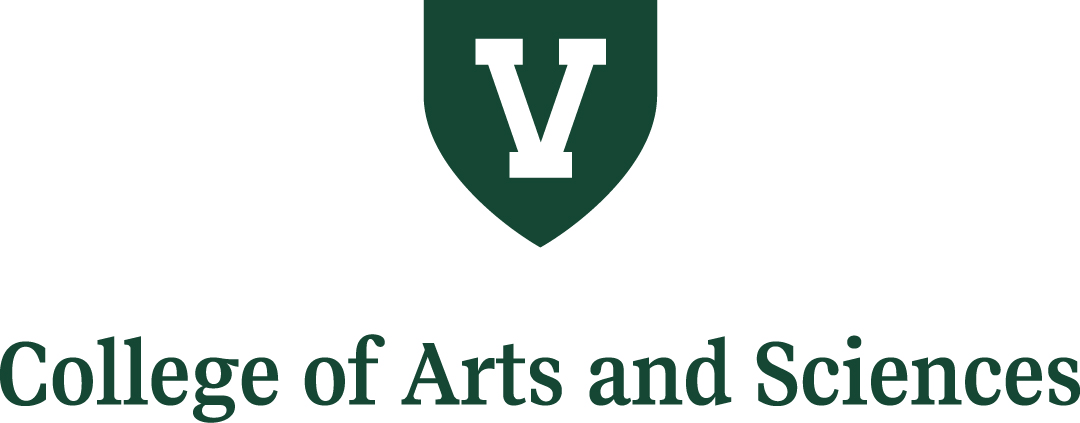This guide is for faculty who teach internship courses or those who have been asked by a student to supervise their internship experience.
Information on this page applies to all internship credit awarded via the College of Arts & Sciences or departments therein. However, your Department or Program may have more specific guidelines for awarding internship credit, please get in touch with your Chair or Director to learn more. Jump to FAQs

Internship Course Best Practices
Faculty are welcome to use these tools and best practices when planning to supervise an internship experience:
Course Format
Depending on your department’s policy, you may offer credit for an internship as an independent study course (2993/2995), or as an internship course (2991).
Internship Course
Students should work 40 hours at their internship site (in-person or remote) for every 1 credit they earn. The course format is extremely flexible, but students should have regular check-ins with faculty throughout the semester and produce a product that meets department requirements for credit toward the major (whether that be a presentation, paper, or other).
Please check with your department chair for department-level policies regarding internship credit. Students and employers should fulfil all requirements detailed in the sections below.
Independent Study
While more free-form, independent study credit for an internship must ensure that the on-site experience is supplemented with sufficient academic work. Most commonly, faculty will require students to do a research project that draws from the day-to-day work they are doing for their internship site. For example, a student working with the Town of Milton to review housing policies from an equity lens might undertake a historical research paper that explores U.S. housing & urban development practices over time.
Hours worked at the internship are not counted toward credit earned, but enough hours should be worked with community members that the student gets a substantive experience and can inform their academic work.
Syllabus Templates
Faculty teaching internship courses are welcome to use the CAS 2991 or CAS 2920 (Communities of Practice) syllabus as a template, understanding, of course, that their department may have additional or slightly different requirements for major credit.
Employer Responsibilities & Requirements
No matter the method of credit internship employers have several requirements to complete before their interns can earn credit at UVM.
Please note that internships for credit must be with companies or organizations that are able to sign the UVM Internship MOU (i.e. legal entities or sole proprietorships with proper insurance coverage). If the internship is 100% virtual and the student will not be visiting the internship site in-person, some coverages may not be necessary and the MOU wording will be adjusted.
Employers must…
Identify a Clear Internship Supervisor for their Intern
It is the responsibility of the internship employer to identify a supervisor for their student intern. This person should be excited and ready to be a mentor throughout the duration of the internship. They should also be prepared to evaluate the student at the end of the semester and provide updates as needed to the UVM faculty member awarding credit for the experience.
Sign the UVM Internship MOU
Employers must review and sign the UVM Internship MOU prior to the beginning of the internship. The MOU outlines the expectations and responsibilities of the UVM faculty member, the University, and the internship site. MOUs are valid for a period of three years and cover all UVM students who engage in a credit-bearing internship with that organization during that period.
Employers will be given an opportunity to review the MOU, request changes if necessary, and then sign. The Career Center maintains copies of all executed MOUs. The MOU identifies the minimum requirements of the institution, additional criteria may be added as needed.
Faculty should…
- Write to cas.internships@uvm.edu to determine whether the proposed internship site already has an MOU with UVM.
- If the MOU is not currently on file, it must be completed before the internship begins – please send the following link to your contact at the organization or contact cas.internships@uvm.edu to begin this process as soon as possible.
- Link to send the internship site: https://go.uvm.edu/uvminternmou
Provide Feedback
At the end of the internship, the on-site supervisor should provide feedback on the intern’s performance to the intern themselves and to the course instructor. This can be done in myriad formats but, most commonly, faculty members create an end-of-semester evaluation form based on the CAS Core Competencies or their course’s specific Learning Outcomes.


Student Responsibilities
Students enrolling in internship credit should provide the following to their faculty member:
Internship Supervisor Contact Information
This is essential so that the faculty member can get in touch with the internship supervisor about signing the UVM Internship MOU and collect end-point evaluations.
Learning Goals
Students should submit – either before the internship begins or as a first assignment of the internship course – a list of learning goals and intended outcomes for the experience. See our Intern Resources page for tools students can use to create these goals.
Internship Hours
Students should also track their hours and submit them to their faculty member at the end of the internship, making sure that their total matches the amount of credit they are enrolled in (40 hours per credit minimum).
Internship Credit FAQs
What qualifies for internship credit?
Internships that qualify for credit are:
- One-time experiences typically lasting 1-10 months.
- Distinguished from a job or volunteer work by a defined “learning agenda” that structures the experience and allows the student to get a real sense of the larger structure and impact of the organization on the community, clients, or other stakeholders.
- Supervised on-site by a dedicated mentor who will ensure the student completes their “learning agenda” and is supported throughout the experience.
- Not interchangeable with positions that the company or organization would normally hire a part-time worker for (i.e. a cashier, front desk, waiter, or cleaning position with no additional learning opportunities or observations of higher-level work).
In all cases, an effort should be made to establish a reasonable balance between the intern’s learning goals and the specific work the organization needs completed.
How many credits can a student earn?
In CAS, students can earn 1 credit for every 40 hours they complete at their internship site. However, this is a minimum–a student may choose to complete more than 40 hours in exchange for 1 credit. Regardless, hours should be accompanied by written reflective and/or academic work.
Can a student earn credit after their internship is finished?
No – Credit must be earned concurrently with the internship experience. For example, students with summer internships cannot complete hours during the summer and then enroll in an internship course during fall semester to get credit for those hours.
Can a student earn credit for hours completed outside of the semester?
No – Hours counted toward credit must be completed between the first and last day of the semester in which the student is enrolled. For example, if a student’s internship begins January 1 and runs through June 30, they can only count hours completed between January 17 and May 16 for credit.
Can international students do internships?
Students on F-1 visas MUST connect with OIE to apply for CPT (Curricular Practical Training) authorization before starting any work or internship experience. The student should also be in touch with their faculty advisor as part of this process.
Still have questions?
Email cas.discovery@uvm.edu — our team would be happy to assist.
